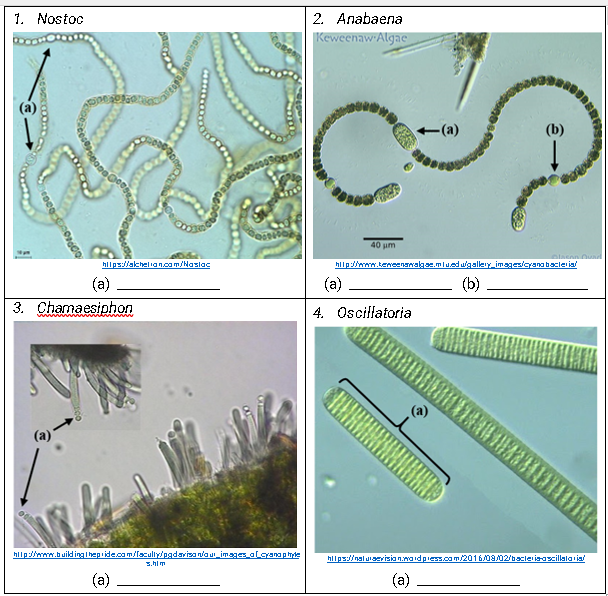1. Nostoc 2. Апabaena Keweenaw Algae (b) 40 um hllps://akchelian.com/Naslac hllp://www.teneenaralgae.mlu.edu'gallery, images/gyana bacler ia (a) (a) (b) 3. Chamaesiphon 4. Oscillatoria hllp://www.buildingIhep ide.com/lacully/pgdaviso n'a ui_images algyanaphyte hllps://naluisevisian.waidpiess.com/2016/09/02/baclei isascillalaria 3.hlm (a)
Bacterial Morphology
The bacteria are prokaryotic organisms that are single-celled, and are found to exist as free-living and possess a microscopic size. The morphology is found to vary in the bacteria, where some of them are identified as individual organisms and the others are detected as colonies. The size and shape of the bacterial cell also represent its morphology.
Bacterial cell structure
Bacteria are single-celled, tiny creatures that may enter healthy tissues and grow rapidly. Bacteria are microscopic organisms that are tiny and unicellular. These are members of the prokaryote kingdom. They live in water, air, soil, and all-natural environments. They are used in industrial and therapeutic processes, and they support a wide range of plant and animal life. The first organism to appear on the planet. Bacteria-like creatures are the oldest known fossils. Bacteria can consume a wide range of organic and inorganic elements, and some may even survive in harsh conditions.
In the pictures below, identify the arrowed reproductive structures of microscopic cyanobacteria based on the following descriptions:
Akinetes are dormant structures larger than the vegetative cells, are rich in food reserves, and have thick walls. Most filamentous cyanobacteria develop akinetes in adverse conditions (e.g., winter, dry periods). When favorable conditions return, they germinate and produce new filaments.
Hormogonia are short pieces of filaments consisting of 5–15 trichomes that fragment and develop into new filaments.
Heterocytes (or heterocysts) are multicellular structures that have a thick and massive sheath, formed by members of the Nostocales. It is the location of the enzyme nitrogenase for nitrogen fixation, the conversion of nitrogen gas into ammonium and then amino acids. They may be intercalary or terminal in position and may germinate from either end or both the ends to give rise to new filaments.
Non-filamentous cyanobacteria generally produce spores such as endospores, exospores and nanocysts which contribute by germinating and giving rise to new vegetative cells in favorable conditions. Endospores are produced endogenously like those in bacteria; exospores are the result of exogenous budding of cells, and the nanocysts are produced endogenously like endospores. The difference between an endospore and a nanocyst is that in endospore formation, the parent cell simultaneously enlarges in size, whereas in nanocyst formation, there is no such enlargement of the cell.

Trending now
This is a popular solution!
Step by step
Solved in 2 steps






